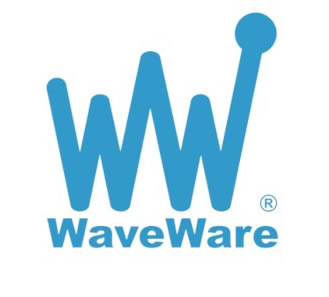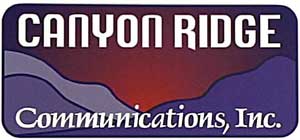Selected portions of the BloostonLaw Telecom Update, and/or the BloostonLaw Private Users Update — newsletters from the Law Offices of Blooston, Mordkofsky, Dickens, Duffy & Prendergast, LLP are reproduced in this section with the firm’s permission.
| BloostonLaw Telecom Update | Vol. 18, No. 10 | March 11, 2015 |
Study Area Boundary Changes Due March 16; Certifications due May 26ILECs that made changes to their study area boundary(ies) during 2014 are required to submit revised
boundary data by March 16, 2015. Some examples of events that would cause study area boundaries to
change include a transaction involving the addition or sale of exchanges; new deployment into previously-unserved areas, such as a new housing subdivision; or an incumbent LEC relinquishing its ETC designation and no longer being obligated to serve an area as a carrier of last resort. In addition, all ILECs are required to recertify their study area boundary data every two years. The deadline for this recertification will be May 26, 2015. Please note: as of yesterday, the FCC indicated that the Study Area Boundary Data Collection site’s virus scan was still generating false positives, but that the problem should be resolved soon. Filers may also email any revised shapefile data to Chelsea.fallon@fcc.gov and john.emmett@fcc.gov. Headlines
AT&T, Verizon and T-Mobile Allege Insincere Coordinated Bidding by DISH in AWS-3 AuctionIn recent comments and ex parte filings with the FCC, AT&T, Verizon and T-Mobile each raised questions about apparent coordinated bidding in the AWS-3 auction by DISH Network and its two Designated Entities (DEs), Northstar Wireless and SNR Wireless. The AWS-3 auction (otherwise known as Auction 97) ended on January 29th with a total of $44.899 billion in gross winning bids. Taking into account bidding credits, the auction generated net proceeds to the US Treasury of $41.329 billion, with DISH’s DEs winning 702 licenses for just under $10 billion, after claiming more than $3 billion in small business bidding credits. An AT&T ex parte letter dated February 20th and filed in the Part 1 DE and Competitive Bidding Rules docket (WT Docket No. 14-170) asked the FCC to eliminate or reform rules that currently allow parties to enter into joint bidding agreements. In making its case, AT&T alleged that DISH and its DEs “engaged in a scheme in which they placed double or even triple bids on numerous licenses throughout the auction.” AT&T alleged that this conduct allowed DISH to exert more buying power than any other applicant and it allowed DISH to “park” bidding eligibility and simultaneously reduce their bid exposure. This practice (which AT&T called bid “stacking”) allowed DISH and its DEs to place up to 3 bids on a single license, nominally keeping the bid units for each bid “active” while only being at risk to have to actually purchase the license just once. An additional benefit to DISH from this conduct “was to sow confusion among its competitors by projecting “shadow demand.” Without naming DISH or its DEs, comments of T-Mobile USA in the same proceeding urged the Commission to address potentially coordinated behavior by entities that share common interests. “[B]idding conduct by some entities disadvantaged other bidders and was directly contrary to the fairness and efficiency goals of the Commission’s blind auction format,” wrote T-Mobile. “By bidding aggressively on many licenses across the country, coordinated entities created the impression that there were more bidders than there actually were, since the identities of bidders were not known to participants. In addition, by increasing bidding activity on specific licenses, these bidders raised minimum acceptable bids more quickly and successfully forced out smaller competitors that could no longer compete.” In an ex parte meeting that was convened on February 25th at the request of FCC staff, representatives of Verizon noted that they observed the same coordinated bidding patterns as AT&T and T-Mobile. Verizon’s ex parte letter following that meeting alleged that “DISH and its DEs frequently submitted two or three bids for the same amount on the same licenses in the same round.” Verizon characterized this behavior as “concerted conduct that went beyond the activity that occurs during typical bidding agreements or bidding consortia.” Verizon also noted that the bidding data “suggest that the activities of DISH and its DEs may have deterred competition and reduced the diversity of winning bidders in a number of instances.” These FCC filings and the absence of Auction 97 long-form applications filed by Northstar Wireless and SNR Wireless from a recent acceptance for filing Public Notice (see story below) suggest that the Commission is taking its investigation on DISH and its DEs very seriously, and that the scope of the Commission’s investigation has been broadened to include investigation into possible unlawful joint bidding by these entities. Rural Call Completion Recordkeeping and Reporting Rules Effective March 4Notice of the OMB approval of the FCC’s Rural Call Completion recordkeeping and reporting rules was published in the Federal Register on March 4, thereby officially establishing them as effective. The rules originally appeared in the Federal Register on December 17, but were not effective until OMB approval was received. The recordkeeping requirements apply to providers of long distance voice service that make the initial long distance call path choice for more than 100,000 domestic retail subscriber lines (counting all business and residential fixed subscriber lines and mobile phones served by the provider and its affiliates). The 100,000 subscriber line floor would appear to exempt most RLECs from the recording, retention and reporting requirements. However, at the time the Order was originally adopted, the FCC “encouraged” such RLECs to voluntarily report quarterly on the number of incoming long distance call attempts they receive, the number of such call attempts answered on their network, and the resulting call answer rate. Whereas this reporting is not initially required (and is not likely to reflect calls made to an RLEC’s customers that were blocked by an intermediate least-cost router well before they get to the RLEC), the FCC’s future enforcement and rulemaking efforts may be influenced by the extent to which RLECs demonstrate their continued interest in call completion matters by filing the voluntary reports. BloostonLaw Replies to Comments on Designated Entity Bid Credit ProposalsBloostonLaw responded last week to comments submitted by other parties regarding proposed changes to the designated entity (DE) bid credit rules. BloostonLaw disagreed with comments asserting that the AWS-3 auction was a success for DEs. Instead, the record shows that a majority of licenses were won by nationwide carriers and “Special Purpose DEs” that are able to compete in bidding against nationwide carriers, but which compromise the benefits of the Commission’s DE program to the detriment of rural telephone companies. To restore this imbalance, BloostonLaw continues to urge the FCC to offer a 25% bidding credit to all rural telephone company bidders. This new bidding credit should be independent of any small business bidding credit for which a rural telephone company bidder may be eligible, and the credits should be cumulative. At the same time, rural commenters agree that bid credits alone are no “silver bullet” for rural telcos that seek to compete in auctions. The FCC should therefore consider adopting further mechanisms to help rural carriers obtain spectrum in and adjacent to their current service territories, such as the rural partitioning incentives suggested in BloostonLaw’s initial comments. Such a mechanism would help rural telcos overcome barriers arising from the Commission’s decision to use Partial Economic Areas (PEAs) rather than smaller Cellular Market Areas (CMAs) for the forward licensing of the 600 MHz band. While comments varied on adopting modifications to the “attributable material relationship” (AMR) rule, BloostonLaw pointed out that the FCC should narrow the AMR rule to clarify that DEs may freely enter into spectrum leasing and other “material relationships” with one another, and it should continue (and strengthen) its prohibition against DEs entering into material relationships with larger carriers. More importantly, the AMR rule should not be modified in a way that would enable an outcome similar to DISH’s domination of the AWS-3 auction. In a related development, Verizon CFO Fran Shammo highlighted another negative impact arising from DISH’s use of bid credits in the auction. As reported by Wireless Week, Shammo said at a conference on Tuesday that in the past spectrum cost less than it did to add capacity using technology. “This auction flipped that balance. We can build capacity for a third of what this spectrum is going to cost,” Shammo said, noting that the FCC’s bidding rules need to be revised to account for companies like Dish, which took home huge amounts of spectrum at a discount while driving up prices for others. Law & Regulation Pennsylvania PUC Deregulates Verizon Landline ServiceLocal news sources are reporting that the Pennsylvania Public Utility Commission has announced a decision to deregulate landline service offered by Verizon Communications in metropolitan areas of Pennsylvania. According to the report, the PUC ruling, reached on a 3-2 vote by commissioners, will affect Verizon customers in Pennsylvania's largest cities, including Philadelphia, Pittsburgh and Erie. The decision comes as the result of a joint petition for reclassification filed by Verizon PA and Verizon North on October 6, 2014, asking to have all retail services in certain parts of the Commonwealth declared competitive and removed from most PUC jurisdiction. Verizon did not propose to reclassify intrastate access services or a small portion of special access services. In its order, the PA PUC was careful to point out that, “Verizon does not seek to abandon any of its service offerings, and we grant no such permission. Likewise, Verizon has not presented any plans to cease operation of its legacy copper network. If Verizon sought to do so, it would be required to comply with applicable requirements of federal law,” referring to the FCC’s discontinuation of service requirements under Section 214. Of course, Verizon has successfully retired copper facilities without going through the 214 process by using the FCC’s Notice of Short Term Network change rules instead, which do not require FCC approval or direct notification to customers before retiring copper facilities. Rather, according to the PUC, granting Verizon’s petition would merely allow it to price all competitive services at its discretion, to detariff basic local exchange service, and would no longer be required to comply with certain quality of service standards, among other things. Public Safety Bureau Extends Comment Period to March 23 for 911 NPRMOn March 6, the FCC’s Public Safety and Homeland Security Bureau issued an Order granting a Petition for a two-week extension of time to respond to the 911 Policy NPRM filed by ATIS, the Association of Public Safety Communications Officials International, the Industry Council for Emergency Response Technologies, the National Association of State 911 Administrators, NENA and USTelecom. Comments are now due March 23; replies due April 21. The 911 Policy NPRM, originally released on November 21, 2014, seeks comment on proposals to: - Expand the scope of entities covered by Rule 12.4 (i.e., the definition of “covered 911 service provider”) to include all entities that provide 911, E911, or NG911 capabilities, such as call routing, automatic location information (ALI), automatic number identification (ANI), location information servers (LIS), text-to-911, or the functional equivalent of those capabilities, regardless of whether they provide such capabilities under a direct contractual relationship with a PSAP or emergency authority.
- Require notification to the Commission and the public of major changes in any covered 911 service provider’s network architecture or scope of 911 services that are not otherwise covered by existing network change notification requirements.
- Require covered 911 service providers that seek to discontinue, reduce, or impair existing 911 service in a way that does not trigger already existing authorization requirements should be required to obtain Commission approval.
- Require covered 911 service providers that seek to offer new services that affect 911 call completion to certify to the Commission that they have the technical and operational capability to provide reliable 911 service.
- Assign the role of 911 network operations center provider for each jurisdiction to the entity responsible for transport of 911 traffic to the PSAP or PSAPs serving that jurisdiction.
Acceptance for Filing of AWS-3 Long-Form ApplicationsYesterday, the FCC issued a Public Notice (DA 15-302) identifying Auction 97 long-form applications that have been accepted for filing. A complete list of applications sorted by Applicant name, market number and Channel block in Excel format is available HERE. In light of the controversy swirling about coordinated bidding in the AWS-3 auction by DISH and its DEs, it should come as no surprise that over 700 long-form applications of Northstar Wireless and SNR Wireless were NOT included in the accepted for filing list. Petitions to deny the applications listed in Attachment A of the Public Notice must be filed no later than March 20, 2015 (i.e., ten days after the PN date). Oppositions to a petition to deny must be filed no later than March 27, 2015 (i.e., five business days after the filing date for petitions to deny). Replies to oppositions must be filed no later than April 3, 2015 (i.e., five business days after the filing date for oppositions). The FCC has indicated it will announce the acceptance for filing of additional long-form applications by separate Public Notice(s). FCC Issues Tentative Agenda for March 26 Open Meeting
The FCC issued a tentative agenda for its March 26, 2015 Open Meeting. At the meeting, which is scheduled to commence at 10:30 a.m., the FCC will consider: - an NPRM to implement Section 102 of the STELA Reauthorization Act of 2014, which directs the Commission to adopt rules that permit the modification of a commercial television broadcast station’s local television market for purposes of satellite carriage rights; and
- an Order addressing the recommendation of the North American Numbering Council regarding what company should serve as the next local number portability administrator.
The meeting will be shown live at www.fcc.gov/live. Rep. Blackburn Introduces Internet Freedom ActOn March 3, Rep. Marsha Blackburn introduced H.R. 1212, a bill to “prohibit the Federal Communications Commission from reclassifying broadband Internet access service as a telecommunications service and from imposing certain regulations on providers of such service.” With the text of the 300+ page Net Neutrality Order still unavailable to the public, one might wonder how the proposed legislation, which boasts 31 fellow Republican cosponsors, might address the issue. The answer is, very directly: The rule adopted by the Federal Communications Commission in GN Docket No. 14-28 on February 26, 2015 (relating to broadband Internet access service) shall have no force or effect, and the Commission may not reissue such rule in substantially the same form, or issue a new rule that is substantially the same as such rule, unless the reissued or new rule is specifically authorized by a law enacted after the date of the enactment of this Act.
The Washington Post ponders what this might mean for the proposed legislation backed by Sen. John Thune (R-S.D.) and Reps. Fred Upton (R-Mich.) and Greg Walden (R-Ore.), which would also block the FCC from using Title II of the Communications Act but still covers many of the Net Neutrality principles enacted by the FCC. FirstNet Holds Special Meeting; Chairman Swenson Testifies before Senate Oversight HearingFirstNet board members met to consider issuing a second public notice on key policy questions during a special board meeting, and FirstNet Chairwoman Susan Swenson testified earlier today as part of the Senate Commerce, Science and Transportation Committee’s first oversight hearing about the three-year-old organization to evaluate FirstNet’s progress in establishing the first nationwide broadband network for emergency first responders. Along with Swenson, Bruce Andrews, Deputy Secretary of Commerce; Mark Goldstein, Director (Physical Infrastructure) for the Government Accounting Office (GAO); Todd Zinser, Inspector General of the Commerce Department and Chief Keith Bryant, President and Chairman of the International Association of Fire Chiefs testified before the Committee. The focus of the hearing was three fold: (a) receive an update on progress made by FirstNet; (b) determine any challenges and (c) ensure that service will be provided in rural areas. Progress Swenson advised that FirstNet has been able to benefit from its experience with the BTOP grants. In particular, issues involving the BTOP grant in Los Angeles have forced FirstNet to reconsider its strategy that was originally going to piggyback a nationwide broadband system on existing state and local government public safety infrastructure. As a result of that evaluation, FirstNet has determined that reliance on commercial infrastructure is more suitable since agreements and memorandums of understanding (MOUs) would not be required. Swenson also reported that FirstNet released a public notice earlier this week seeking comment on system design. It will also be releasing a draft request for proposal (RFP) later this month in order to obtain feedback which can then be reflected in the final version that is scheduled for release at the end of the year. Finally, FirstNet has continued the consultation process with the states and their tribal partners. Swenson indicated that these consultations are ongoing and are necessary for FirstNet to develop an accurate RFP that will meet each state’s individual requirements. Challenges The Government Accounting Office estimates that the total cost of a nationwide broadband public safety system will be significantly more expensive than the $7 billion that FirstNet will received as a result of the AWS-3 spectrum auction. While FirstNet believes that it will have additional funding because of user fees from commercial players, there is still a concern that FirstNet may not have enough funds to build the system. An audit of FirstNet reflected that there were insufficient internal controls in place to ensure compliance with federal requirements — especially in the procurement area. The GAO indicated that FirstNet is making progress in correcting these deficiencies. Swenson noted that federal requirements and reliance on other agencies for services are slowing FirstNet’s progress. In particular, FirstNet does not have hiring authority and must rely on other agencies for this authority. As a result, it is taking FirstNet six to nine months to hire a new employee. FirstNet and various senators agreed that processes need to be streamlined so that FirstNet can meet its obligations to build the necessary 700 MHz nationwide broadband public safety communications system. Rural Areas Several of the senators, including Senator Thune expressed concern as to whether FirstNet would bring service to rural America. While it is well known that rural America is not typically a high priority for large commercial carriers due to economic considerations, FirstNet was clear that service throughout rural America and tribal areas is a top priority. In discussing this priority, Swenson stated that there are rural area milestones and that construction will be completed in phases since it is impossible to construct the entire network simultaneously. Swenson concluded her remarks on this subject by indicating that FirstNet talks more about rural than urban because “it is that important.” Cyber Security The Committee identified cyber security as an issue for ensuring the safety of the public safety communications network because of the potential for terrorists and other individuals or groups to disrupt our critical communications capabilities. Swenson and Secretary Andrews both reassured the Committee that cyber security is a high priority and that FirstNet is collaborating with the appropriate agencies to ensure that the system will be protected from attack. Throughout the hearing, the senators appeared to support the work of FirstNet and want to take steps that will facilitate its success. While there is concern with problems that FirstNet has had in the past, it also appeared that the Committee was supportive of the overall progress made to date. The question is whether or not FirstNet can sustain this progress and construct a new system that is financially viable within the funding limits provided by Congress. Industry
Netflix Accused of Changing Sides on Net NeutralityNetflix was recently taken to task in the media over comments made by its CFO, David Wells, at an industry conference last Wednesday. “Were we pleased it pushed to Title II? Probably not,” Wells said at the conference. “We were hoping there might be a non-regulated solution.” Readers will recall that Netflix has been one of the more vocal supporters of Net Neutrality, despite entering into a number of “paid peering agreements” with ISPs, including AT&T, Comcast, Time Warner Cable, and Verizon, to improve the quality of their streaming video. Indeed, FCC Commissioner Ajit Pai reached out to Netflix at the end of last year asking why it would enter into such agreements despite their vocal support for Net Neutrality, and also for certain alleged questionable practices involving changing streaming protocols to impede open caching software from correctly identifying and caching Netflix traffic. In a statement to press, a spokeswoman for the company said, “Netflix supports the FCC’s action last week to adopt Title II in ensuring consumers get the Internet they paid for without interference by ISPs. There has been zero change in our very well-documented position in support of strong net neutrality rules.” Calendar At A Glance
March
Mar. 11 – Reply comments are due on the IntraMTA Petition for Declaratory Ruling.
Mar. 16 – Deadline for comments on Online Public File Expansion NPRM.
Mar. 16 – Deadline to notify AT&T of Service Provided in CAF Phase I Deployment Census Blocks.
Mar. 16 – Deadline to submit Study Area Boundary Changes (if any).
Mar. 23 – Comments are due on 911 Policy NPRM.
Mar. 30 – Comments are due on Letter of Credit Requirements.
Mar. 31 – FCC Form 525 (Delayed Phasedown CETC Line Counts) is due.
Mar. 31 – FCC Form 508 (ICLS Projected Annual Common Line Requirement) is due.
Mar. 31 – International Circuit Capacity Report is due. April
Apr. 1 – FCC Form 499-A (Annual Telecommunications Reporting Worksheet) is due.
Apr. 1 – Annual Accessibility Certification is due.
Apr. 7 – Reply comments are due on 911 Outage NPRM.
Apr. 13 – Reply comments are due on Letter of Credit Requirements.
Apr. 14 – Deadline for reply comments on Online Public File Expansion NPRM.
Apr. 21 – Reply Comments are due on 911 Policy NPRM. May
May 1 – FCC Form 499-Q (Quarterly Telecommunications Reporting Worksheet) is due.
May 31 – FCC Form 395 (Annual Employment Report) is due. | 







































 David George and Bill Noyes
David George and Bill Noyes



































